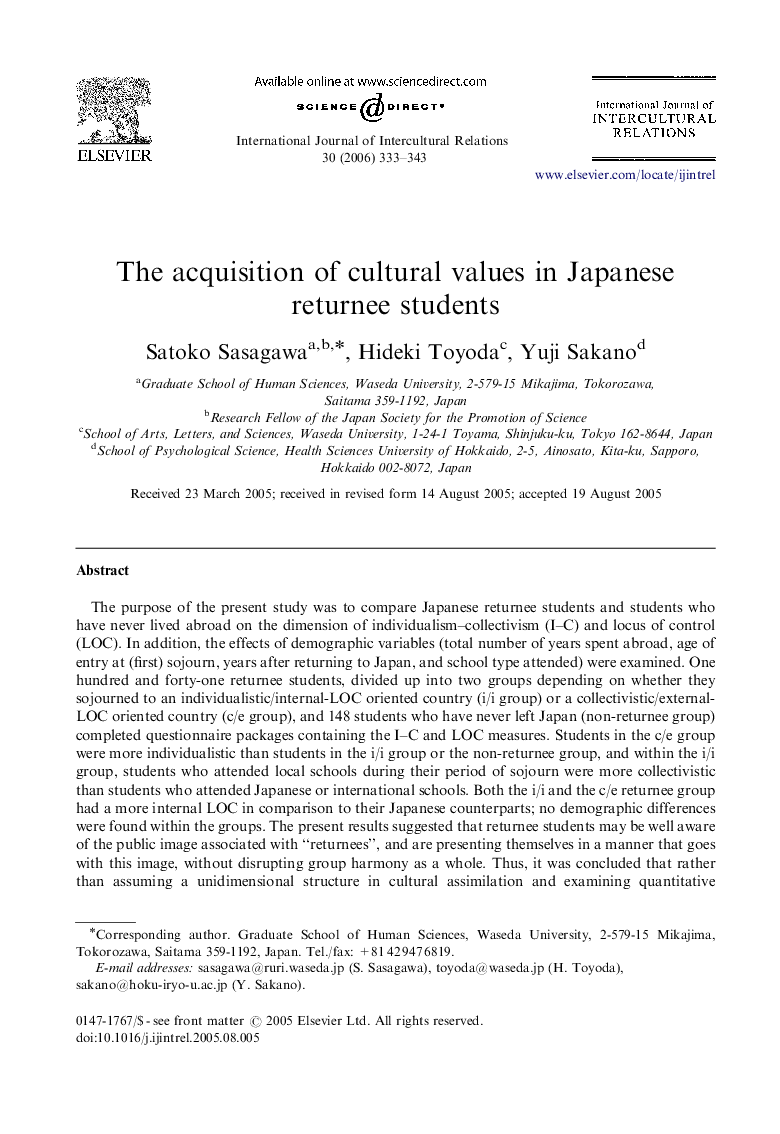| Article ID | Journal | Published Year | Pages | File Type |
|---|---|---|---|---|
| 947641 | International Journal of Intercultural Relations | 2006 | 11 Pages |
The purpose of the present study was to compare Japanese returnee students and students who have never lived abroad on the dimension of individualism–collectivism (I–C) and locus of control (LOC). In addition, the effects of demographic variables (total number of years spent abroad, age of entry at (first) sojourn, years after returning to Japan, and school type attended) were examined. One hundred and forty-one returnee students, divided up into two groups depending on whether they sojourned to an individualistic/internal-LOC oriented country (i/i group) or a collectivistic/external-LOC oriented country (c/e group), and 148 students who have never left Japan (non-returnee group) completed questionnaire packages containing the I–C and LOC measures. Students in the c/e group were more individualistic than students in the i/i group or the non-returnee group, and within the i/i group, students who attended local schools during their period of sojourn were more collectivistic than students who attended Japanese or international schools. Both the i/i and the c/e returnee group had a more internal LOC in comparison to their Japanese counterparts; no demographic differences were found within the groups. The present results suggested that returnee students may be well aware of the public image associated with “returnees”, and are presenting themselves in a manner that goes with this image, without disrupting group harmony as a whole. Thus, it was concluded that rather than assuming a unidimensional structure in cultural assimilation and examining quantitative differences in returnee students, future research should consider the functional aspects of such diversity.
